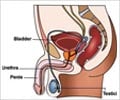3D printer helps create a prosthetic face for a man who had the entire left side of his face removed after suffering from cancer.

Emergency surgery to deal with the cancer removed almost the entire left side of his face, including his eye, his cheek bone and most of his jaw, leaving a gaping hole where his features had once been.
Now, in what is thought to be the first procedure of its kind in Britain, surgeons have used a new type of 3D printer to create a prosthetic face for 60-year-old Moger.
The prosthetic face has transformed the father-of-two's life, allowing him to drink his first glass of water and taste food for the first time since he underwent surgery to remove the tumour.
Until now he has had to eat and drink through a tube directly into his stomach.
"I was amazed at the way it looks," said Moger, who lives in Waltham Abbey, Essex, with his fiancee.
Advertisement
Moger was referred to him by Nicholas Kalavresos, a surgeon at University College London Hospital who carried out the life-saving but physically devastating work to remove the tumour.
Advertisement
Dr Dawood said they put the CT scan and facial scan together and used software to plan what we wanted him to look like.
The scans allowed Dr Dawood to design a "scaffold" to replace the missing bone, created from titanium using a technique known as 3D milling, where a piece of metal is cut into shape by a computer. Screw-like 2-inch long rods were also made in a similar way before being surgically implanted into the remaining bone on the right side of Moger's face, allowing the scaffold to be secured in place.
A plastic plate was also created using a printed model of his skull to help form a seal at the top of his mouth, allowing him to eat and drink again.
Computer software enabled Dr Dawood to create a mirror image of the right side of Moger's face and using 3D printing he built up a facial shell made of toughened nylon.
This was used to mould the new silicone mask that would cover the hole in Moger's face, using magnets so it can be secured in place and removed easily when Moger goes to bed.
Dr Dawood now hopes to develop new techniques to allow them to print the silicone mask, which would help speed up the process and allow patients to have access to replacements rapidly.
Source-ANI














